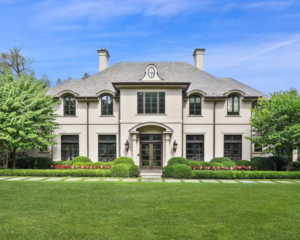Introduction
If you’re a homeowner in the bustling city of New York and have plans for renovations, it’s vital to have a clear understanding of which projects mandate a permit from the esteemed Department of Buildings (DOB) and how to seamlessly navigate through the application process. By familiarizing yourself with the intricacies and requirements, you can confidently embark on your renovation journey. So let’s delve into the details and gain valuable insights on this topic!
Type I Projects
Type I projects typically involve significant changes to a building’s use, egress, or occupancy type, requiring careful consideration and adherence to building regulations. Examples of such projects include:
Changing Property Use: If you plan to transform your commercial property into a residential one, such as converting an office building into apartments, you’ll need a Type I permit. This process often entails modifying the building’s layout, electrical systems, and plumbing to meet residential codes and standards.
Adding a Room: If you’re considering adding a room or altering the number of rooms in your apartment by demolishing or constructing walls, this also falls under Type I. This type of project requires meticulous planning and coordination with architects and contractors to ensure structural integrity, compliance with fire safety regulations, and proper allocation of utilities.
By understanding the complexities and nuances of Type I projects, you can effectively navigate the permit process and successfully execute your desired building modifications.
Type II Projects
Type II projects, although they do not involve changes in use, egress, or occupancy type, still require permits due to the nature of the work involved. Some examples of such projects include:
Major Repairs: This category encompasses repair projects that involve significant changes, such as structural work and electrical modifications. These types of repairs are crucial for ensuring the safety and stability of the structure and therefore necessitate permits.
Adding a Bathroom or Bedroom: If you are planning to add a new bathroom or bedroom to your property, it is important to obtain a Type II permit. This permit ensures that the new addition meets the necessary building codes and regulations.
Plumbing and Electrical Work: Renovations that involve plumbing and electrical systems require specific permits. The Department of Buildings (DOB) mandates an Electrical Permit and a Plumbing Permit for any renovations involving these systems. This ensures that the work is carried out by licensed professionals and meets safety standards.
By obtaining the appropriate permits for Type II projects, you can ensure that the necessary guidelines and regulations are followed, promoting both safety and compliance.
Projects Not Requiring DOB Permits
Cosmetic improvements, such as painting, wallpapering, and floor installation, are generally considered minor renovations that can refresh the aesthetic appeal of a space. These types of enhancements, while not typically requiring a DOB permit, can significantly transform the look and feel of a room, creating a more inviting and stylish environment. Whether you’re looking to add a pop of color, update outdated wallpaper, or give your floors a fresh new finish, these simple yet impactful changes can breathe new life into your home or workspace.
Applying for a DOB Permit
To apply for a Department of Buildings (DOB) permit in New York, it is essential to hire a licensed Professional Engineer (PE) or Registered Architect (RA) who will meticulously prepare and submit detailed plans for your renovation to the DOB. These plans should be comprehensive and in compliance with all relevant laws and regulations.
Once the plans are submitted, they will undergo a review process by the DOB, which may take some time due to potential backlogs or the need for plan revisions. It is important to factor in these potential delays when planning your project timeline.
To ensure a smooth permit application process, it is crucial to ensure that all submitted plans are complete, accurate, and under the DOB requirements. Failure to meet these requirements can result in fines or penalties.
If you have any doubts or concerns about the DOB permit requirements or the overall process, it is advisable to seek the guidance of a professional who can provide expert advice and ensure compliance with all necessary regulations. Taking these precautions will help you avoid any unnecessary setbacks or complications during your Building renovation project.



